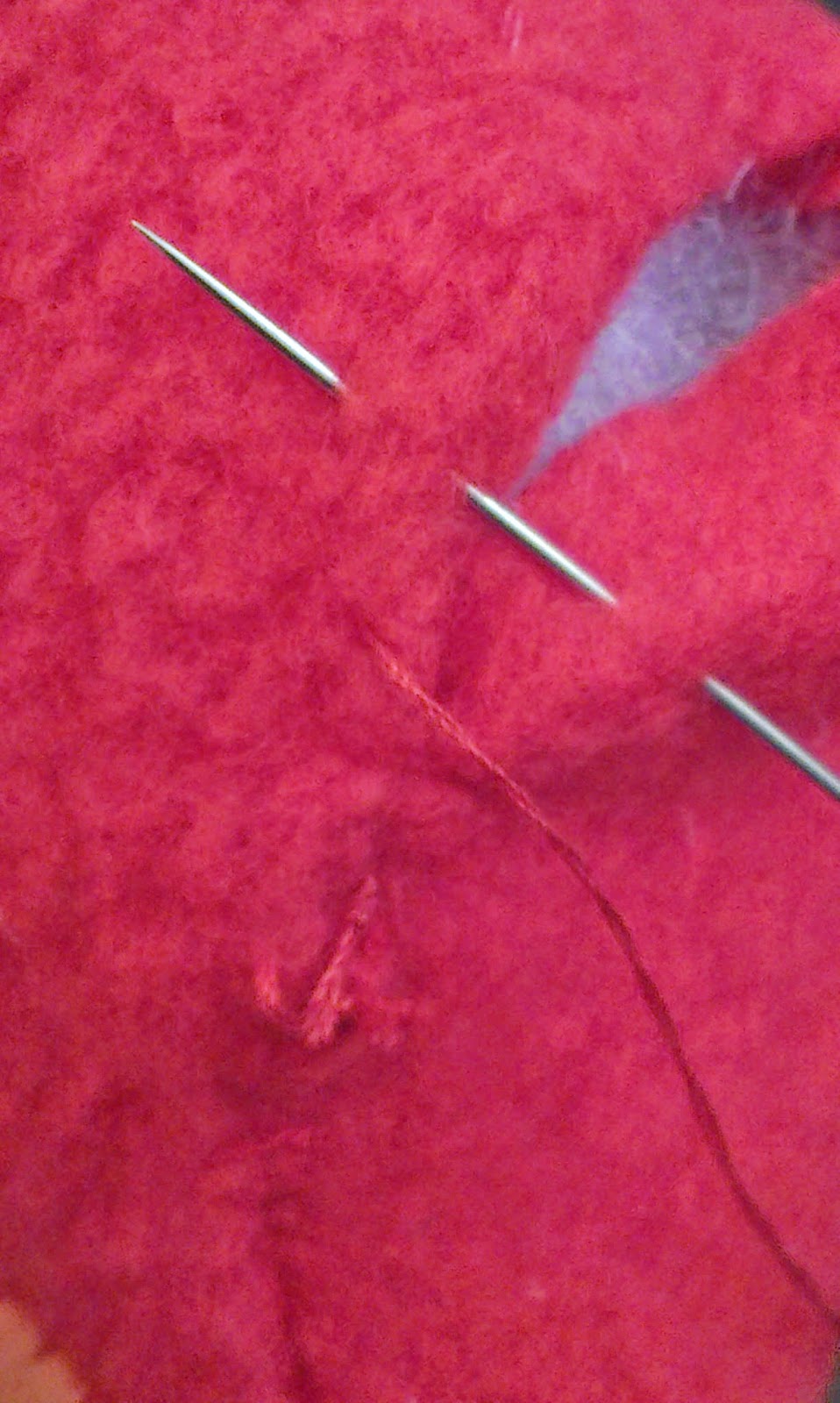My skylights needed to be 46.5" wide, and 46.5-50" long (they were supposed to bow a little bit). Since I was altering curtains, half the work was already done for me. I just needed to cut the curtains down on two sides to make them the correct size, and then add a curtain rod sleeve to the bottom end.
First, I cut the curtain shorter on the right side. The curtain was now 48" wide. I also unpicked approximately 2 inches of the curtain rod sleeve (at the top right), so that I could finish the new sleeve edge neatly.
I then pinned 1/2" of the cut side down. Wide shot:
A closer view:
I was careful to preserve the top curtain rod sleeve.
I stitched the side seam down at 1/4".
Next, I folded that seam inward, and pinned 1 inch down, checking frequently to make sure the curtain width remained 46.5".Once that second side seam was stitched down, I extended the unpicked curtain rod stitches back out to the new edge of the cover.
Next, I pinned and cut the bottom of the curtain to 51" long. I pinned and sewed down the bottom edge, again with a 1/4" seam. I then pinned that new, clean edge to give me a 48"-long cover. Again, I checked the length of the cover every 5-6 inches. With such a large project, you need to be careful. This also gave me my sleeve for the second curtain rod.
Sewing the bottom curtain rod sleeve:
As I have mentioned before, in my towel hoodie tutorial, with large projects I prefer to roll up the project for easier maneuvering. Then I feed the project into the sewing machine slowly, with my right hand guiding the un-sewed portion in front of the sewing machine, and my left hand guiding the already-sewed portion from behind the machine. I sew slowly, and adjust the fabric very couple inches. In this way, the weight of the project does not pull my stitches all over the place.
The finished project. Now you can see the finished curtain rod sleeves, on opposite ends of the cover:The skylight cover, in its entirety:
And repeat for the second curtain. This one went faster, since I knew what measurements to pin at for each step.
The side seam. Again, verifying width with each pin:
Once both side seams had been stitched, I again pinned and sewed the bottom hem, to create a clean edge and then create the second rod sleeve:
Sewing away:And voila! Two skylight covers.
We could of course have made them from scratch, but it was definitely much easier to shorten these pre-existing curtains. I always had a strong, industrial edge to measure off of when pinning the right and bottom sides. And it was very nice to have one curtain rod sleeve already made for each!
The skylights are recessed into the ceiling. These extending shower rods will be used to hold the covers in place:
The finished skylights:
 |
| Skylight 1 |
 |
| Skylight 2 |




















































